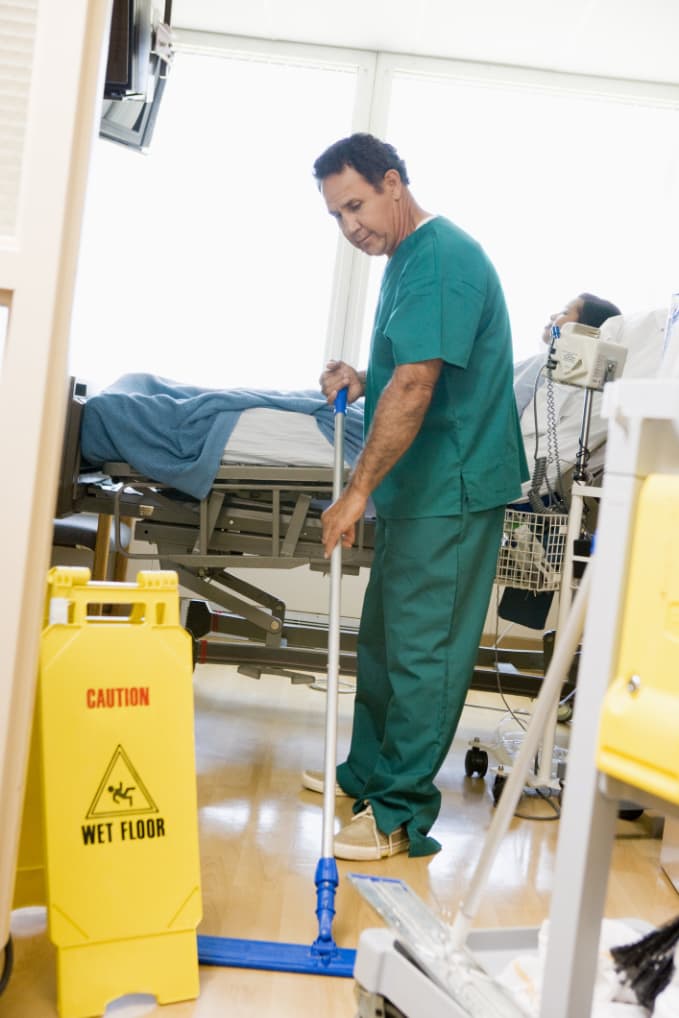New genomic technique tracks multiple hospital superbugs simultaneously
A groundbreaking method for monitoring antibiotic-resistant bacteria in hospitals could improve infection control and patient care.
Researchers have developed a novel genomic technique that can track the spread of multiple superbugs in a hospital simultaneously, offering a potentially game-changing approach to preventing and managing common hospital infections. The new method, developed by scientists from the Wellcome Sanger Institute, the University of Oslo, and Fondazione IRCCS Policlinico San Matteo in Italy, uses deep sequencing to capture all common infectious bacteria in a hospital at once, providing a comprehensive view of the bacterial landscape in clinical settings.
The proof-of-concept study, published 20 August 2024 in The Lancet Microbe [1], demonstrates the effectiveness of this pan-pathogen deep sequencing approach in capturing the entire population of pathogenic bacteria found in multiple hospital intensive care units (ICUs) and ordinary wards. The research was conducted during the first wave of the COVID-19 pandemic in 2020, offering insights into the bacterial colonisation patterns during this critical period.
Current methods for tracking hospital-acquired infections involve culturing and sequencing pathogens separately, a time-consuming and labour-intensive process. In contrast, the new technique allows for the simultaneous sequencing of multiple bacterial species, significantly reducing the time and effort required to obtain a comprehensive picture of the bacterial ecosystem within a hospital.
Widespread colonisation by resistant bacteria
The study’s findings paint a concerning picture of the prevalence of antibiotic-resistant bacteria in hospital settings. Researchers discovered that each ICU patient tested in the study was colonised by at least one treatment-resistant bacterium, with the majority harbouring several simultaneously. This high level of colonisation underscores the urgent need for more effective monitoring and control measures in hospital environments.
Professor Jukka Corander, co-senior author from the Wellcome Sanger Institute and the University of Oslo, emphasised the transformative potential of this new method: “Our approach can now confidently be used in future research to capture the full breadth of high-risk bacteria in an area, and hopefully by hospitals to help track and limit the spread of treatment-resistant bacteria.”
Implications for hospital infection control
The new genomic technique offers several advantages over traditional surveillance methods. By providing a more comprehensive and rapid assessment of the bacterial population in a hospital, it could enable healthcare providers to identify and respond to potential outbreaks more quickly and effectively.
Dr Harry Thorpe, first author from the University of Oslo and visiting worker at the Wellcome Sanger Institute, highlighted the importance of keeping pace with evolving bacterial threats: “Antibiotic-resistant bacteria evolve and spread quickly, and therefore our tracking methods have to keep pace with them. Knowing the sequencing of all the bacteria in a sample gives a more complete picture of the diversity found in an area, which is crucial in predicting risk and understanding the external factors involved in the spread of a specific strain.”
The researchers believe that their approach could be integrated with existing hospital clinical surveillance systems, providing a powerful tool for identifying, tracking, and limiting the spread of common multiple treatment-resistant bacteria. This integration could significantly enhance hospitals’ ability to manage the risk of antibiotic-resistant infections, particularly in high-risk areas such as ICUs.
Professor Nicholas Thomson, co-senior author from the Wellcome Sanger Institute, emphasised the potential impact on hospital practices: “Integrating a deep genomic sequencing approach into healthcare systems in this way gives those working in hospitals a new opportunity to see and track these bacteria, assisting in diagnosing infections and allowing outbreaks to be identified and controlled.”
The COVID-19 connection
The study’s timing during the first wave of the COVID-19 pandemic provided an unexpected insight into the bacterial landscape during this period. Professor Fausto Baldanti, Director of the Microbiology and Virology Unit at Fondazione IRCCS Policlinico San Matteo, noted: “Our Unit detected the first COVID-19 case in the Western world, and we witnessed the dawn of the pandemic along with the huge scientific effort worldwide on SARS-COV2. However, the study by our researchers showed that superbugs did not disappear. Indeed, the simultaneous presence of multiple species of drug-resistant bacteria in ICU wards admitting COVID-19 patients could have been a relevant component of the clinical manifestation of the new disease in those dramatic days.”
As antibiotic resistance continues to pose a significant threat to global health, with predictions suggesting that AMR bacteria could cause more deaths than cancer by 2050, the development of more effective surveillance and control measures is crucial. This new genomic technique represents a significant step forward in the fight against hospital-acquired infections and could pave the way for more targeted and effective infection control strategies in the future.
The researchers hope that further refinement and implementation of this technique will lead to improved guidelines for assessing and managing the risk of treatment-resistant infections for all patients in a hospital, particularly those in intensive care units.
Reference:
- Thorpe, H., Pesonen, M., Corbella, M., et al. (2024). Pan-pathogen deep sequencing of nosocomial bacterial pathogens during the early COVID-19 pandemic, spring 2020: A prospective cohort study. The Lancet Microbe.
https://doi.org/10.1016/S2666-5247(24)00113-7


